
On 19 Apr 1892, the first Duryea automobile was operated by pioneer manufacturer Charles E. Duryea. This would become the model for the first automobile regularly made for sale in the U.S.
In 1915, Charles Duryea published The Automobile Book: a Practical Treatise on the Construction, Operation and Care of Motor Cars Propelled by Gasoline Engines. You can read his short review of the history of the automobile up to that time in his first chapter, Anticipations of the Motor Car. You may be wryly interested in his concluding remarks about electric vehicles.
In the third chapter, he writes about Practical Points on Motor Cars, and therein you may begin to appreciate exactly what it meant for the eager new owner of a 1915 automobile to become “acquainted with it.” If taking delivery on a 1915 car, mark Duryea's advice to a new owner to avoid spectators “quite willing to enjoy to the fullest any amusement which they could derive from his lack of experience. Under such conditions, few men can retain their self-control and reasoning faculties to the fullest…”
As for testing the fuel mixture: “This can be tested by removing a spark plug, and holding a lighted taper, or match, well down in the hole… In making this test, be sure to keep the face and fingers out of the way of the flame, which will extend a foot or two, and is so hot, that it is liable to burn one’s fingers badly, and singe one’s face and hair.”
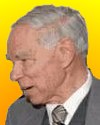
On 19 Apr 1912, Glenn Seaborg was born, the American nuclear chemist whose work producing new elements was recognized by being the only person to have an element named after him while still alive: element 106, seaborgium. Today's book pick is: , by . This autobiography (completed after his death by his son) is engaging and readable throughout - a “page-turner” giving a compelling portrait of a man in love with science. His life is synonymous with the beginning of the Nuclear Age, yet he became a firm and effective advocate for peaceful applications of nuclear energy and of nuclear arms limitation.
It is available from Amazon, typically about (As of earlier time of writing - subject to change.)
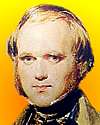 | False facts are highly injurious to the progress of science, for they often long endure; but false views, if supported by some evidence, do little harm, as every one takes a salutary pleasure in proving their falseness; and when this is done, one path towards error is closed and the road to truth is often at the same time opened. |
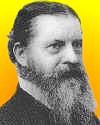 | Another characteristic of mathematical thought is that it can have no success where it cannot generalize. |
 | People must understand that science is inherently neither a potential for good nor for evil. It is a potential to be harnessed by man to do his bidding. |
| Before you look at today's web page, see if you can answer some of these questions about the events that happened on this day. Some of the names are very familiar. Others will likely stump you. Tickle your curiosity with these questions, then check your answers on today's web page. | |
| Births | |
 | Glenn T. Seaborg, born 19 Apr 1912, was an American nuclear chemist. During 1940-58, Seaborg and his colleagues at the University of California, Berkeley, produced nine of the transuranic elements (plutonium to nobelium) by bombarding uranium and other elements with nuclei in a cyclotron. What name did he coin for the series in which the new elements were placed? |
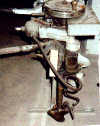 | Ole Evinrude, born 19 Apr 1877, was inventor and manufacturer of the outboard marine engine. He patented his first in 1910. It quickly replaced steam and foot-driven motors for boats and spurred a new industry. The result was the Evinrude Outboard Motor that remains popular to this day. What was Evinrude's nationality? |
| Deaths | |
 | A French physical chemist (1859-1906) shared the Nobel Prize for Physics in 1903 for his studies of radioactive substances. He conducted his research under conditions of much hardship and barely adequate laboratory facilities. What is the name of this scientist? |
 | Charles Robert Darwin (1809-1882) was an English naturalist renowned for his documentation of evolution and for his theory of its operation, known as Darwinism. His evolutionary theories were propounded chiefly in two of his works - The Origin of Species (1859) and Descent of Man. What is the next phrase in the full title of the book, which begins: The Origin of Species… |
| Events | |
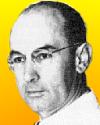 | On 19 Apr of a certain year, Albert Hoffman chose to deliberately ingest 250 micrograms of the Lysergic Acid Diethylamide (LSD) he had synthesized at the Sandoz Laboratories in Basel, Switzerland. Three days earlier he had accidentally absorbed some through his skin by touching a container of the drug. From the accidental exposure he experienced restlessness, dizziness and hallucinations: “extreme activity of imagination.” In which decade did Hoffman first deliberately experience the effect of the drug LSD? |
Fast answers for the previous newsletter for April 18: gallium • diode • photoelectric effect • Erasmus Darwin was the grandfather of Charles Darwin • the airplane was a jet, making the first U.S. jet passenger international trip.
 If you enjoy this newsletter, the website, or wish to offer encouragement or ideas, please send feedback by using your mail reader Reply button.
If you enjoy this newsletter, the website, or wish to offer encouragement or ideas, please send feedback by using your mail reader Reply button. Your click on a Facebook, StumbleUpon, or other social button on the site webpages is also a welcome sign of appreciation. Thank you for using them.
© This newsletter is copyright 2020 by todayinsci.com. Please respect the Webmaster's wishes and do not put copies online of the Newsletter — or any Today in Science History webpage. (If you already have done so, please remove them. Thank you.) Offline use in education is encouraged such as a printout on a bulletin board, or projected for classroom viewing. Online, descriptive links to our pages are welcomed, as these will provide a reader with the most recent revisions, additions and/or corrections of a webpage. For any other copyright questions, please contact the Webmaster by using your mail reader Reply button.
--
If you do not want to receive any more newsletters, Unsubscribe
To update your preferences and to unsubscribe visit this link
Executive Real Estate Business Class
-
"It was like a man with wings. It wasn't like anything you'd see on TV or in a monster movie." ...
About the publisher
Search This Blog
Blog Archive
-
▼
2020
(1542)
-
▼
April
(134)
- ANIMALS: The rush to get a dog
- On This Day for April 30 - George Washington inaug...
- Medical Association Confirms Hydroxychloroquine 90...
- Newsletter for Thursday 30 April.
- April 30: Hitler Commits Suicide but What Happened...
- SCIENCE: The Spinosaurus is scarier than we thought
- Demystified: What’s the Difference Between a Bee a...
- On This Day for April 29 - British royal wedding, ...
- Breaking News and Historians in the News from HNN
- Is this Global Infection-induced Stealth Euthanasi...
- Newsletter for Wednesday 29 April.
- April 29: The Fall of Saigon and the Master of Fak...
- Family: 12 ideas to keep kids busy this week
- TRAVEL: Seeing from afar—the best photography books
- On This Day for April 28 - Benito Mussolini execut...
- Where did those 1600 Nazi Doctors go that were bro...
- Where did those 1600 Nazi Doctors go that were bro...
- Newsletter for Tuesday 28 April.
- April 28: James Cook Lands at Botany Bay, Mutiny o...
- HISTORY: Battling a pandemic so women could vote
- On This Day for April 27 - Independence for Sierra...
- New Op Eds This Week on History News Network
- NY Policy Results in Widespread Nursing Home Elder...
- Newsletter for Monday 27 April.
- April 27: Spanish Settle in the Philippines, Labor...
- SPECIAL: Family guide: Keeping your kids moving!
- The Last Kingdom | Historical quiz questions | Rom...
- On This Day for April 26 - Chernobyl nuclear accid...
- Data tells a drastically different story than what...
- Newsletter for Sunday 26 April.
- April 26: The Great Debate, Chernobyl and Oscar Wi...
- On This Day for April 25 - Hubble Space Telescope ...
- Save your life by using a mask correctly - Can pro...
- Newsletter for Saturday 25 April.
- CORONAVIRUS SPECIAL EDITION: What you need to know...
- April 25: The Guillotine, DNA and the 1st Solar Ba...
- PHOTOGRAPHY: Honoring those who help us every day
- How A Devastating Plague May Have Hastened The Dem...
- On This Day for April 24 - Installation of Pope Be...
- This Week's Roundup Top Ten from History News Network
- Newsletter for Friday 24 April.
- COVID 19 Research, the Nuremberg Code for research...
- April 24: War! What is it Good For?
- YOUR WEEKLY ESCAPE: The secrets hidden in a 500-ye...
- Truth Needs a Champion. Is It You?
- ANIMALS: More cats with the coronavirus. Should I ...
- On This Day for April 23 - Voting for Eritrea's in...
- Newsletter for Thursday 23 April.
- April 23: Defeat of the Vikings, Robert E. Lee and...
- SCIENCE: Beyond Greta: Who’s fighting for the Eart...
- Earth Day Special Edition: Today, let the planet i...
- Demystified Video: What's Inside the Great Pyramid?
- On This Day for April 22 - First Earth Day, Miguel...
- Breaking News from History News Network
- What do you think so far?
- Newsletter for Wednesday 22 April.
- April 22: Portugal Claims Brazil, Barbara Walters ...
- TRAVEL: Marooned at sea, 95,000 people
- On This Day for April 21 - French elections held, ...
- Newsletter for Tuesday 21 April.
- Your support empowers our scientists, explorers an...
- April 21: Babur Establishes the Mughal Empire, Tir...
- The step-by-step plan we are experiencing is expla...
- HISTORY: When George Washington was an epidemic fi...
- On This Day for April 20 - Explosion on the Deepwa...
- This Week's New Op-Eds on History News Network
- Corrected Link: Globalist Plan Rolling Out now cre...
- Globalist Plan Rolling Out now creating global pol...
- Newsletter for Monday 20 April.
- April 20: Pasteurization, Marie Curie Isolates Rad...
- SPECIAL: Coronavirus family guide: 'Back' to school
- VE Day at 75 | The scandalous lives of the Byrons
- On This Day for April 19 - American Revolution beg...
- Newsletter for Sunday 19 April.
- April 19: The 'Shot Heard Round the World' and How...
- Family: It's almost Earth Day! Create your own saf...
- The Compass: Earth Day 50th anniversary edition
- On This Day for April 18 - The midnight ride of Pa...
- Major Media (Fox included) Lies for the Deep State...
- Newsletter for Saturday 18 April.
- Our award-winning storytelling goes further.
- April 18: The 'Regulars are Coming!' and the Life ...
- CORONAVIRUS SPECIAL EDITION: People are having biz...
- PHOTOGRAPHY: On the ground in Nairobi as COVID-19 ...
- On This Day for April 17 - Canada Act proclaimed, ...
- The Roundup Top Ten from History News Network!
- Newsletter for Friday 17 April.
- April 17: The Bay of Pigs Invasion and the Boxing ...
- YOUR WEEKLY ESCAPE: Majestic photos of the tallest...
- Free Download: Britannica's Chrome Extension
- ANIMALS: The quarantine lifeline of a dog (or cat)
- On This Day for April 16 - Harriet Quimby's flight...
- Newsletter for Thursday 16 April.
- April 16: Madame Tussaud's Bloody Background
- SCIENCE: Ways to see what the world could be
- Discover Ancient Sparta with National Geographic H...
- Demystified: Can Eating Too Many Carrots Make Your...
- On This Day for April 15 - Sinking of the Titanic,...
- Breaking News from HNN
- Newsletter for Wednesday 15 April.
-
▼
April
(134)
-
Blogroll
-
About
HistoryFact










0 comments:
Post a Comment